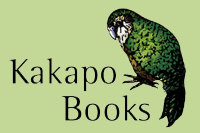"I'm
glad the films I've made have not only been enjoyed by people, but have
also been written about in such an intelligent manner"
(Peter Jackson) "this stands as the definitive analysis of Jackson's fascinatingly diverse body of work to date"
(Steven Jay Schneider, Harvard University, USA) |
In
only a decade, Peter Jackson has managed to carve a niche for himself
within both exploitation and mainstream practices. Jackson's visual
imagination was apparent with his first movie, Bad Taste (1987), but its gross-out content continued in his next two films Braindead (1992), and Meet the Feebles
(1989), and caused him to be dismissed by many as merely a purveyor of
horror movies, albeit perhaps with a mildly amusing, though adolescent,
sense of humour. The subsequent breakthrough of "the Kaiser of Kiwi ketchup" to art cinema auteur, with Heavenly Creatures
(1994), was no surprise to perceptive viewers who saw Jackson's style
through the splatter. Steadfastly refusing to work away from New
Zealand, Jackson's most ambitious project has been the directing of a
trilogy of films based on J.R.R. Tolkien's The Lord of the Rings,
for the American company New Line Cinema; "the biggest cinema
production ever undertaken in the Southern Hemisphere", a newspaper
declared. Given Jackson's critical and commercial success, his work is
crucially important both for New Zealand film specifically and for an
understanding of national cinema generally.
To
clarify this point, one might usefully compare Jackson to the Canadian
director David Cronenberg, who early in his career similarly exploited
the horror genre. Both filmmakers work within English-speaking national
film industries dominated by American cinema and popular culture.
Initially, both were coolly received by the international critical
establishment but quickly found an enthusiastic following with horror
and exploitation audiences. Both have also extended their work in
horror to more highbrow projects, gaining critical respect and
ultimately being embraced by official culture as an example of national
artistic pride. Like Cronenberg in Canada, Jackson is now regarded in
his own country as a respected champion of indigenous filmmaking (a
position Jackson hilariously exploits in his mockumentary, Forgotten Silver
[1995]).This book is the first critical study of Peter Jackson's films
and includes sections on each of his first six productions - from Bad Taste, via Heavenly Creatures and The Frighteners, to Forgotten Silver - as well as consideration of Jackson's childhood 8mm amateur movies and his epic The Lord of the Rings trilogy. The publication concludes with a comprehensive filmography and bibliography.
|
